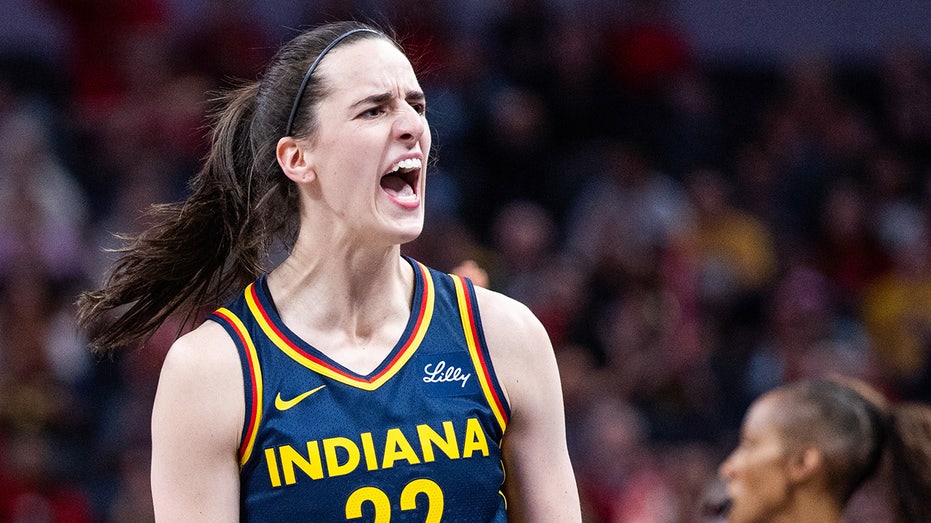The Great Collapse: How Caitlin Clark’s Injury Exposed the WNBA’s ‘Artificial’ Success and Triggered a Financial Freefall
The WNBA playoffs, which were supposed to be the triumphant culmination of a breakthrough season, have instead become the backdrop for a full-blown financial and ratings disaster. The moment the Indiana Fever officially announced that Caitlin Clark’s season was over, the artificial bubble that had surrounded the league didn’t just leak—it violently burst. What has followed is a catastrophic collapse in ticket prices, a vanishing television audience, and a mass exodus of media interest, exposing the brutal truth that the WNBA’s celebrated growth was a house of cards built on the shoulders of a single, transcendent superstar.
The league that was confidently planning expansions and boasting of its arrival as a mainstream sport is now in a state of freefall, plummeting back to its pre-2024 state of irrelevance at a speed that has shocked even its most ardent critics. The numbers don’t lie, and they paint a grim picture of a business model that has been proven fundamentally flawed and utterly dependent on one player.
The Market Has Spoken: A Ticket Price Catastrophe
The most immediate and undeniable evidence of the collapse can be seen in the ticket market. Before Clark’s injury, the average WNBA ticket was selling for a healthy $89. The second she was officially ruled out for the season, that price crashed by nearly 30% to just $62. For the Indiana Fever, the epicenter of the phenomenon, the numbers were even more devastating. The average price for their road games—which had become the hottest ticket in every city they visited—plunged a staggering 71%, from $137 down to $80.

This isn’t a minor dip; it’s a market crash. Playoff games across the league, which would have commanded premium prices just months ago, are now struggling to find buyers. Tickets for contests that were easily selling for over $200 during the peak of « Clark Mania » can now be found for as low as $25. Even at these bargain-basement prices, arenas are struggling to fill seats. The market has spoken with undeniable clarity: WNBA basketball without Caitlin Clark is a product that most consumers are not willing to pay a premium for.
The Sound of Silence: Vanishing Ratings and a Media Exodus
If the empty seats are a visual problem, the empty airwaves are a crisis. The league’s television ratings have reportedly fallen off a cliff. Games that would have effortlessly pulled in over 1.8 million viewers with Clark on the court are now said to be struggling to attract 200,000—a mind-boggling decline of nearly 90%. The situation has become so dire that some critics allege that official ratings data from sources like Sports Media Watch has mysteriously stopped being updated, fueling speculation that the numbers are too embarrassing for the league and its network partners to release.

This ratings collapse has triggered a predictable and swift media exodus. The same major sports talk shows on ESPN and FS1 that were dedicating lead segments to the WNBA all summer have gone silent. Prominent commentators like Colin Cowherd and Jason Whitlock, who were once engaged in the league’s daily discourse, have publicly stated they are no longer covering it. Without Clark generating viral moments and daily headlines, the WNBA has lost its hook for the mainstream audience, and the media, which chases ratings above all else, has moved on.
A House of Cards Built on One Player
This crisis has validated every skeptic who argued that the WNBA’s recent growth was artificial and unsustainable. The league’s entire business model, from national television deals to merchandise and corporate sponsorships, became inextricably linked to the « Clark effect. » Merchandise sales, which had exploded by over 500%, are now plummeting. Corporate sponsors who invested millions to be associated with the league’s unprecedented buzz are reportedly rethinking their commitments, realizing their investment was tied to one person, not the league as a whole.
The WNBA’s desperate attempts to manufacture alternative storylines in Clark’s absence have completely flopped. Despite pushing other talented players and rivalries, the viewership and attendance data are clear: fans are not interested. The harsh mathematical reality is that the WNBA without Clark generates virtually the same minimal level of fan interest it did before she arrived.
A Preventable Disaster of the League’s Own Making
Perhaps the most infuriating part of this entire mess is that it was completely preventable. Clark’s season-ending injury was not a fluke accident. It was the direct result of a season in which she was relentlessly targeted with a level of physicality that the league failed to control. From her initial quad and groin injuries to the final breakdown, her body was subjected to a systematic pounding that poor officiating and inadequate player protection protocols allowed to flourish.
Commissioner Cathy Engelbert, who once confidently spoke of the league’s bright future, is now left to preside over a crisis of her own making. Instead of building protective systems around their most valuable asset in history, the league and its leadership passively watched as their entire financial future was jeopardized. The failure to protect the one player responsible for their comeback has now resulted in the very nightmare scenario critics warned of: a league returning to irrelevance, its « breakthrough » exposed as nothing more than a fleeting, fragile moment that is now well and truly over.



